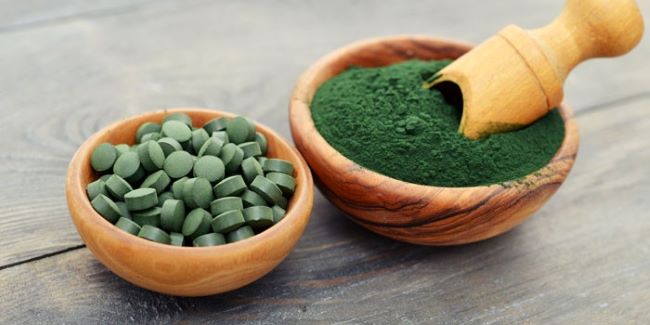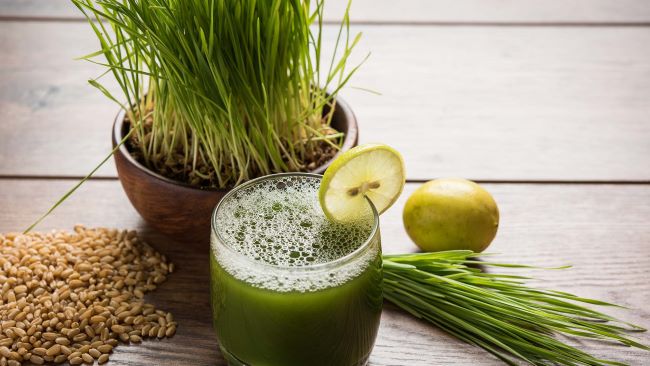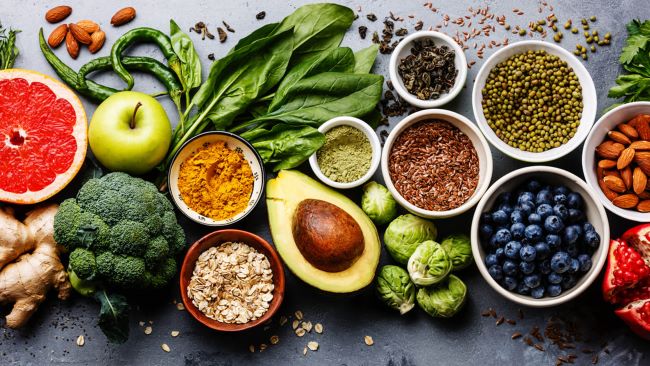What Are Superfoods and How to Add Them in Your Diet
The phrase “superfood” refers to foods that provide maximal nutritional advantages with the fewest calories. They include a lot of vitamins, minerals, and antioxidants. The majority of them is plant-based. Today, I’ll go over some typical examples of superfoods, their advantages, and how to incorporate them into your diet.
1. Spirulina
Spirulina is a high-nutrient health food. It contains phycocyanin, a potent plant-based protein. According to research, this has antioxidant, pain-relieving, anti-inflammatory, and brain-protective qualities. Spirulina’s antioxidants and other minerals have been connected to various health advantages. Many of the antioxidants included in spirulina have anti-inflammatory properties in the body. And remember that cancer and other diseases are worsened by chronic inflammation.

The plant pigment that gives spirulina its blue-green colour, phycocyanin, has been proven to reduce inflammation in the body and stop tumour growth and destroy cancer cells. The immune-boosting protein is being researched for its possible application in cancer treatment. Spirulina protein has also been shown to inhibit the body’s absorption of cholesterol, hence decreasing cholesterol levels.
How to take it
A tiny spoonful of spirulina powder which you can get along with your other favourite health foods online can be mixed into a glass of water or juice and consumed straight, or it can be added to a smoothie. Be aware that even a small amount of highly pigmented spirulina may turn your drink a strong blue-green, nearly black colour.
What to look out for
Spirulina’s health advantages may interact with or counteract the effects of some drugs, such as those used to treat diabetes, immunosuppressants, and blood thinners.
Spirulina is frequently touted to have significant levels of vitamin B12, however, its substance is poorly absorbed by the human body. If you have a B12 deficit, which is frequent in people who eat a plant-based diet, you should supplement from another source.
2. Wheatgrass
Wheatgrass is a food derived from the plant Triticum aestivum. It’s recognised as a superfood with incredible health advantages. For good reason, health advocates have long praised this plant’s numerous benefits. Wheatgrass contains a potent combination of nutrients, making it incredibly beneficial to your health.
Wheatgrass may be an excellent choice for improving your health due to its broad blend of vitamins and nutrients. This superfood also contains antioxidants, antimicrobial agents, and anti-inflammatory compounds.
How to take it
It can be taken as a general health tonic and may even aid in the treatment of certain disorders. More research is needed to assess its true usefulness, although scientists agree that wheatgrass is promising.
When you initially begin consuming wheatgrass, start with a modest amount and gradually increase your intake until you reach the recommended dose. This will assist your body in adjusting to wheatgrass digestion.

What to look out for
Wheatgrass should always be purchased from a trustworthy source for health foods online or in-person such as a health store. Consult with an associate or the label to confirm that the plants were properly grown and cleaned. This reduces the likelihood of hazardous bacteria and mould.
3. Turmeric and Curcumin
Turmeric is the spice responsible for the yellow colour in curry. It has been used as a spice and medicinal herb in India for thousands of years. Science has recently begun to support traditional assertions that turmeric contains compounds with therapeutic effects. These compounds are known as curcuminoids. Turmeric’s major active component is curcumin. It has potent anti-inflammatory properties and is a potent antioxidant.
Heart disease is the leading cause of death worldwide. Researchers have been studying it for decades and have learned quite a bit about why it occurs. Unsurprisingly, heart disease is quite complicated, with numerous factors contributing to it. Many steps in the heart disease process may be reversed by curcumin. Curcumin may have the greatest benefit for heart disease by increasing the function of the endothelium, the lining of your blood vessels.
How to take it
To reap the full benefits of curcumin, be sure to choose a product of quality from a trusted health foods online store and boost its bioavailability (the rate at which your body absorbs a chemical). It’s recommended to combine it with black pepper, which contains piperine. Piperine is a natural chemical that increases curcumin absorption by 2,000%. The greatest curcumin pills contain piperine, making them significantly more effective. Curcumin is also fat-soluble, which means it dissolves and breaks down in fat or oil. As a result, taking curcumin pills with a high-fat meal may be beneficial.
What to look out for
Turmeric does not normally have any serious negative effects, although some people may develop stomach trouble, nausea, dizziness, or diarrhoea. In one case, a person who took extremely large doses of turmeric, more than 1500 mg twice daily, developed a severe irregular cardiac rhythm.

4. Berries
Acai berries are tiny, dark purple berries native to South America. They include 19 amino acids as well as numerous antioxidants. Blueberries have a high fibre, manganese, and vitamin K content. Cranberries include a flavonoid that helps reduce the incidence of urinary tract infections.
Goji berries are a little red berry native to Asia that is strong in vitamin C and E, as well as a variety of antioxidants. They are often used in Eastern medicine to treat diabetes and high blood pressure, as well as to preserve the health of the eyes, liver, and kidneys. Include them in your well-portioned healthy diet and reap the effects of nature’s best!
5. Sauerkraut
Aside from its versatility and delicious flavour, sauerkraut is a well-known superfood, ranking towards the top of the list of foods to include in a balanced diet. It has a low-calorie count of 27 calories per cup and is high in folate, vitamin B6, riboflavin, thiamine, and vitamin K. It contains one-third of the daily value of vitamin C and is high in minerals like iron, potassium, and magnesium.
And fermenting cabbage thus making sauerkraut increases its nutritional value by making it more digestible and providing a probiotic impact on the digestive system. As if all of this wasn’t enough to make sauerkraut a superfood, it’s also thought to lower the risk of breast cancer in women.
6. Garlic
Garlic is history’s most commonly used medicinal herb. It is a member of the onion family and is known for its antibacterial, antifungal, and antiviral properties. The ancient Egyptians, Hellenes, Romans, and Chinese used it to treat anything from bronchitis and influenza to whooping cough.
Today’s medical publications have a plethora of scientific studies studying garlic’s ability to help fight infections as well as providing possible advantages to people suffering from diabetes, asthma, and cancer.
One of the most interesting recent discoveries is that garlic can help protect against heart disease by thinning the blood and lowering cholesterol. If you overindulged in high-fat foods over the holidays, this could be the superfood you need.